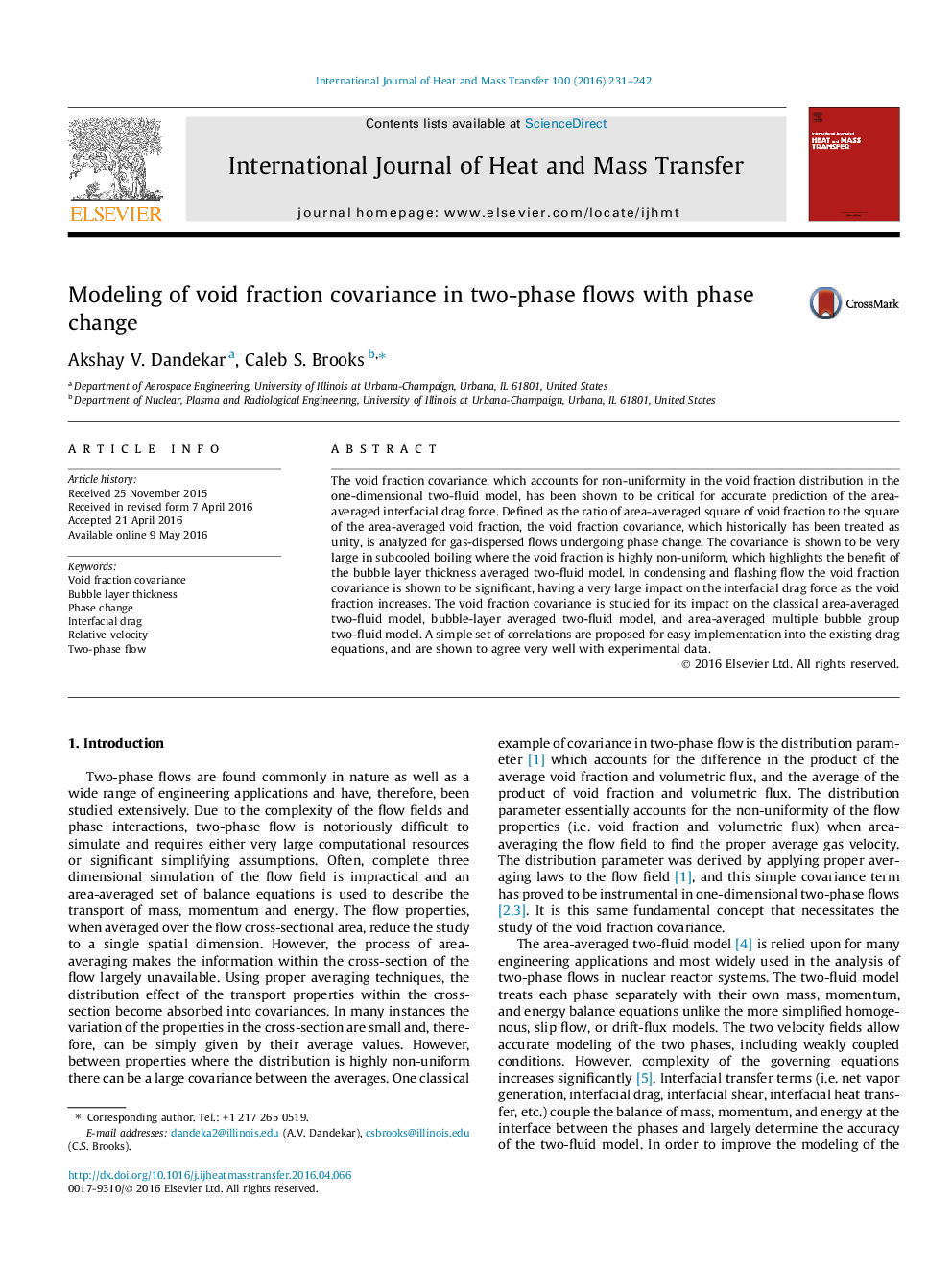| Article ID | Journal | Published Year | Pages | File Type |
|---|---|---|---|---|
| 656354 | International Journal of Heat and Mass Transfer | 2016 | 12 Pages |
•Improvement of the area-averaged local relative velocity in gas-dispersed flow.•Covariance in area-averaging total, group-1, and group-2 void fraction are addressed.•Boiling and adiabatic condensing/flashing flows are considered.•Easily implemented correlations are proposed for important void fraction covariances.
The void fraction covariance, which accounts for non-uniformity in the void fraction distribution in the one-dimensional two-fluid model, has been shown to be critical for accurate prediction of the area-averaged interfacial drag force. Defined as the ratio of area-averaged square of void fraction to the square of the area-averaged void fraction, the void fraction covariance, which historically has been treated as unity, is analyzed for gas-dispersed flows undergoing phase change. The covariance is shown to be very large in subcooled boiling where the void fraction is highly non-uniform, which highlights the benefit of the bubble layer thickness averaged two-fluid model. In condensing and flashing flow the void fraction covariance is shown to be significant, having a very large impact on the interfacial drag force as the void fraction increases. The void fraction covariance is studied for its impact on the classical area-averaged two-fluid model, bubble-layer averaged two-fluid model, and area-averaged multiple bubble group two-fluid model. A simple set of correlations are proposed for easy implementation into the existing drag equations, and are shown to agree very well with experimental data.
